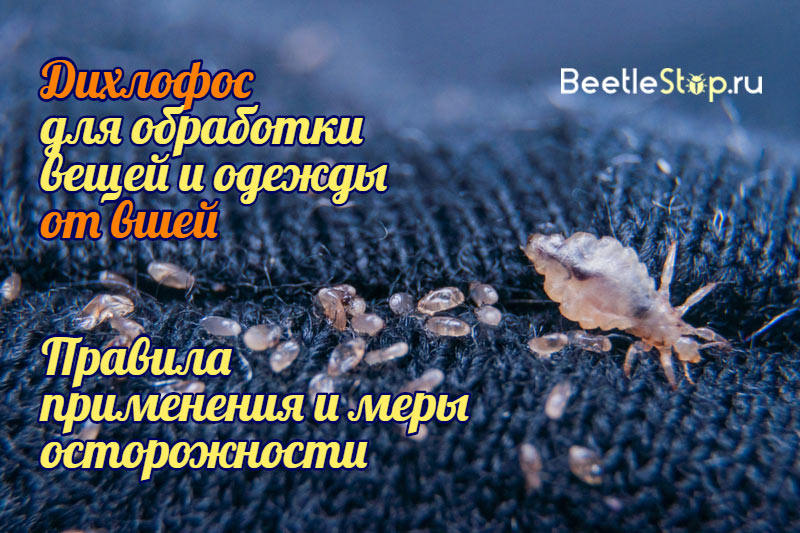Can I use dichlorvos from lice?
Dichlorvos from lice living on the human body is usually not used. This product is so toxic that applying it to the surface of the skin can cause serious health problems. Another thing is if it is used to process infected items and clothing. In this case, its use is justified and quite effective.

The principle of dichlorvos and methods of application
Modern dichlorvos are very different from their ancient namesake in the composition and degree of danger to human health. However, despite this, they still remain toxic, so their use against head lice is hardly justified. But from the parasites that live in things and clothes, they really help. Moreover, dichlorvos eliminates lice quickly enough and at the same time is relatively inexpensive.
How does dichlorvos affect lice?
Dichlorvos, currently produced, have the following features:
- The principle of action of an aerosol is based on the property of its insecticide. Depending on it, the drug has an intestinal or contact poisonous effect. Since lice feed only on blood, manufacturers use mainly the second option, but a combined effect can also occur. In this case, the drug, as a rule, can also be used against other parasitic insects.
- Dichlorvos enters the body of an insect through the respiratory tract or through chitinous integuments. A relatively tender lice skin makes it easy. However, the eggs of parasites, or, as they are also called, nits, are already protected more thoroughly and the drug is powerless against them. Therefore, when processing dichlorvos, repeated disinsection will be required after a few days.
- Most dichlorvos, penetrating the body of an insect, have a neuroparalytic effect. This is expressed in the destruction of nerve impulses and blocking the passage of nerve signals. As a result, insect paralysis occurs and later its death.
- Modern dichlorvos from lice and nits is practically odorless. This property greatly facilitates its use, but this does not mean at all that, along with the smell, it has lost its toxicity. Therefore, we repeat once again that it is impossible to spray it on a person’s head in any case, especially this rule applies to children.
Is it possible to remove pubic lice with dichlorvos? In principle, this is possible. However, is it worth it to risk your health if there are more civilized and effective means?
Interesting fact! As part of the previous dichlorvos, an insecticide completely different from current aerosols was used. In fact, modern drugs have nothing to do with the previous drug. Using a popular name, current manufacturers mislead consumers by selling aerosols under that name.
Application methods
So, how to deduce linen lice dichlorvos? The following methods are used for this:
- Clothing and infected items are laid out in bags, where dichlorvos is then sprayed. The exposure time is indicated in the instructions for the drug. In the future, it is aired and, if possible, washed with detergents.
- The clothes are hung on the street and thoroughly sprayed.This method is less reliable, but much safer and more convenient.
- All infected items and clothes are laid out, and also hung in a small room, then dichlorvos is sprayed into it. The room is kept with closed doors and windows the prescribed time, and then aired. Things and clothes are washed.
Each of these methods has its advantages and disadvantages, but in most cases all of them are quite effective.
Advice! If you still decide to use dichlorvos from body lice, then take some precautions. In particular, check for allergies. The test can be carried out at home, applying a small amount of the drug to the internal fold of the elbow. If there is a strong burning sensation, itching, as well as swelling, then there is clearly an allergy and the use of dichlorvos can result in anaphylactic shock, and then death.
Precautions for handling dichlorvos
Regardless of where and how dichlorvos from lice is used, the following safety measures must be observed when working with it:
- use rubber gloves;
- wear safety glasses;
- use respirators;
- Do not eat or drink during processing;
- do not touch the face with your hands;
- protect food from aerosol exposure;
- wash hands and face after handling with soap.
It is also necessary to ensure that no one accidentally ends up in the aerosol exposure field. It is especially worthwhile to be careful with children, since their poisoning requires a much lower concentration of poison than for adults.
How to get rid of a child’s lice, see in this video:


 (votes: 3, average rating: 4,67 out of 5)
(votes: 3, average rating: 4,67 out of 5)